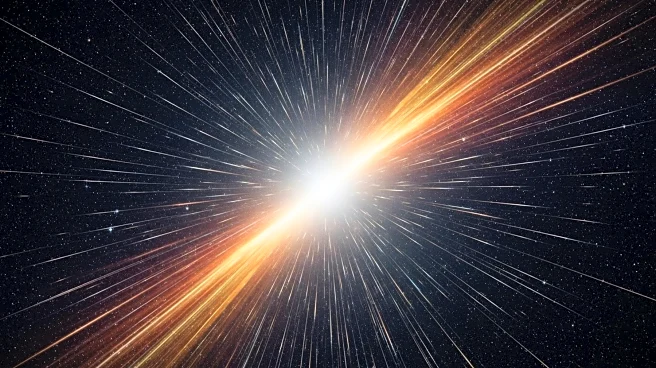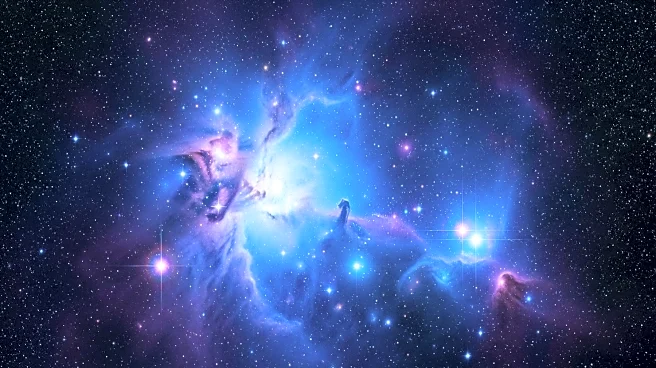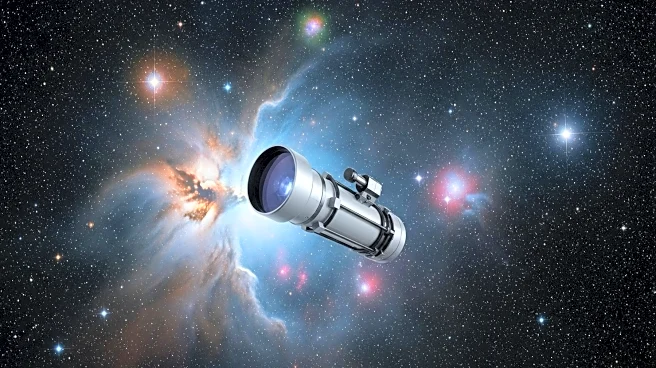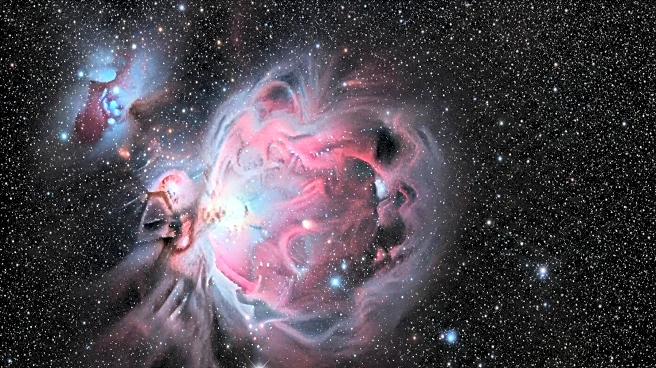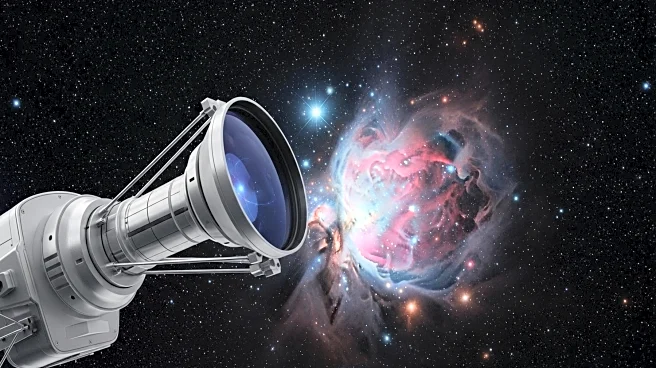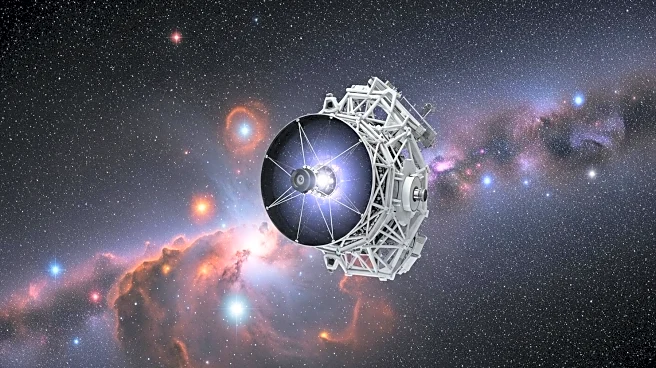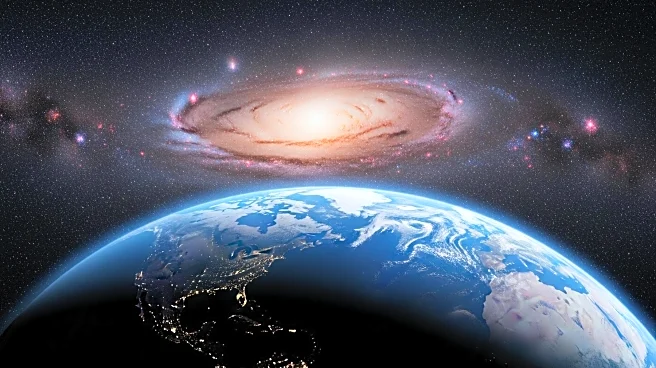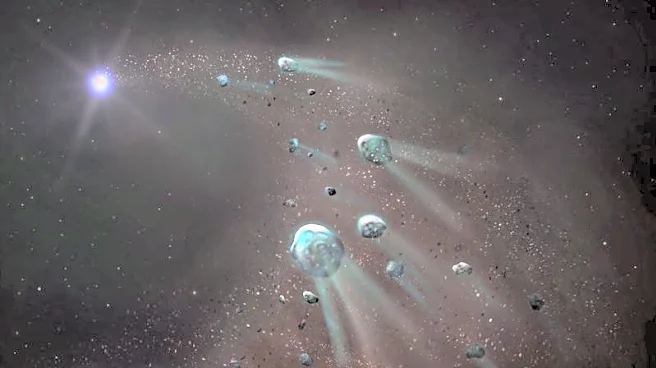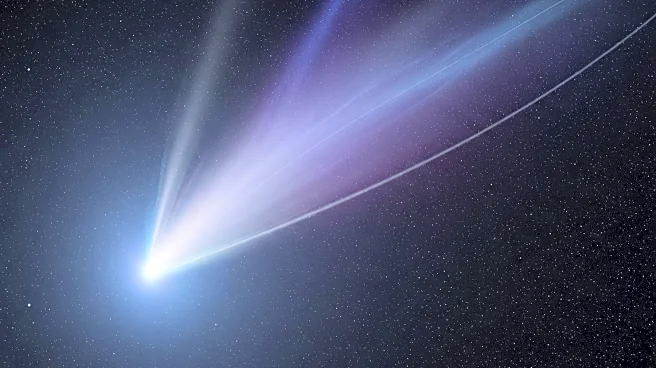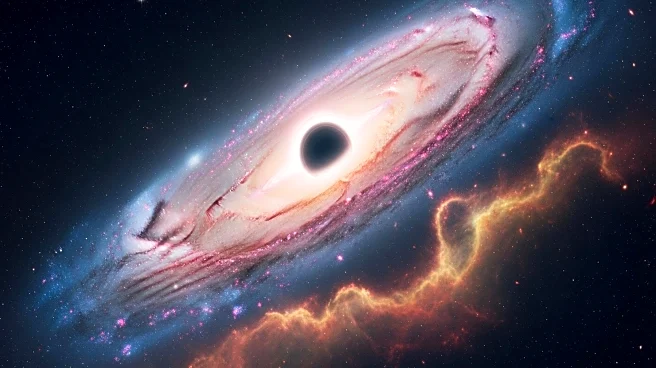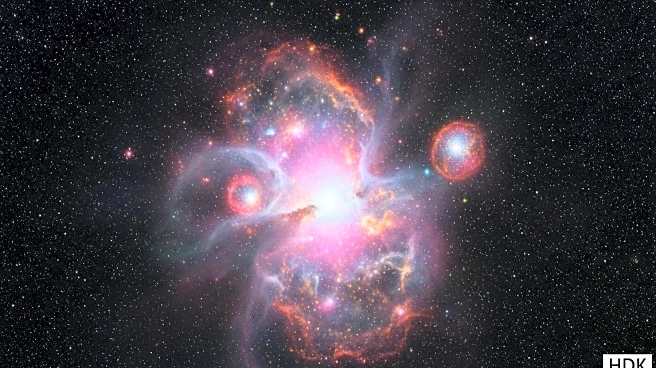What is the story about?
What's Happening?
Astronomers have detected a unique cosmic explosion characterized by repeated gamma-ray bursts lasting nearly an entire day, a phenomenon not previously observed. The event, named GRB 250702BDE, was initially thought to have occurred within the Milky Way but was later confirmed to originate from beyond it. The gamma-ray bursts, typically caused by the death of a giant star, are usually singular events lasting milliseconds to minutes. However, this explosion showed repeated and periodic activity, challenging existing understanding of such cosmic phenomena.
Why It's Important?
The discovery of this prolonged gamma-ray burst challenges current astrophysical models and suggests the existence of previously unknown cosmic processes. Understanding the cause of this event could provide new insights into the life cycles of stars and the dynamics of black holes. The findings may also have implications for the study of gamma-ray bursts, which are among the most powerful explosions in the universe. This event could lead to a reevaluation of the mechanisms behind these bursts and their role in cosmic evolution.
What's Next?
Researchers are continuing to monitor the aftermath of the explosion to determine its precise location and measure the energy it generated. The study aims to explore possible explanations, such as the involvement of an intermediate-mass black hole or a unique type of stellar death. Further observations and analyses are needed to understand the underlying mechanisms of this unprecedented event. The findings could pave the way for new theories about the formation and behavior of gamma-ray bursts.
Beyond the Headlines
The event raises questions about the limits of current astrophysical models and the potential for unknown cosmic phenomena. It highlights the need for continued exploration and observation of the universe to uncover new insights into its fundamental processes. The discovery also underscores the importance of international collaboration and advanced technology in advancing our understanding of the cosmos.
AI Generated Content
Do you find this article useful?
